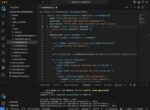
As organizations seek faster time-to-market releases of the software necessary to stay ahead of the competition, new solutions that enable the business to create applications without the need for IT to get involved are starting to emerge.
As with all things, of course, there are several angles from which to approach this need. Some platforms aim at what are being called citizen developers: business analysts or marketing folks who can do small, department application compilations such as for workflows, forms and the like.
(Related: The rise of the citizen developer)
Other platforms are actually made for developers, to help them speed along the more mundane development tasks so the bulk of their time is adding business value. These solutions, which have evolved from the Rapid Application Development tooling from at least a decade ago, aim to make developers more productive.
But regardless of approach, one thing is clear: Low-code solutions will not replace developers. In fact, they could give them even more to do, according to the experts interviewed for this article.
Paulo Rosado, CEO of RAD platform provider OutSystems, looks at typical businesses and sees a spectrum of skill sets. “At the one end you have the citizen developer/Excel power user, and at the other end you have the uber-geek, Stanford/MIT graduate doing complex development,” he said.
“What we’ve noticed is software managed by low-code platforms evolves and becomes so large that you hit the competence wall of Visual Basic/Access developers. The application grows, the number of integrations increases, the complexity increases, and now you need to do real software engineering.”
Derek Roos prefers to call the citizen developer a “business engineer.” Roos, CEO of Mendix (which has created a RAD platform in the cloud), said, “People entering the workforce today are not uncomfortable with technology,” noting that in previous generations, business people would not even think to jump in and build an application on their own. Mendix, he said, wants to enable businesses to speed up their time to market for new multi-channel, multi-device applications that are primarily user-facing but integrated with back-end systems. He said the platform is meant to facilitate cross-functional teams (business and IT) to build applications quickly.
Solutions such as these had often lived in the dark corners of “shadow IT,” where small, departmental teams create quick-and-dirty apps. “Shadow IT, or rogue IT, has been seen as a bad thing, but should be seen as a positive,” Roos said. “A strategic platform can make business more agile and competitive.”
OutSystems’ Rapid Application Delivery Platform is meant to put IT at ease by allowing control to remain there. “Shadow IT is always a pain for IT, because IT ends up getting things that are not maintainable, because the tool cannot evolve with the software,” Rosado said. “You need IT buy-in [for low-code solutions], because ultimately they’re the ones who will end up managing these types of platforms” and the applications created in them.
The platform, Rosado said, is a model-driven toolset integrated with the back-end systems that works out of the box with OutSystems’ cloud platform. “So you can do QA, staging and deployment right from the platform. IT installs it, and will start using it out of our cloud to do iterative development,” he said.
Rosado noted the platform facilitates very fast iteration cycles. “When the code stabilizes, then you stage it to a production environment with one-click staging, and all elements of the app get deployed,” he said. Once deployed, the platform will measure latency on the client and server sides, and when issues are detected, you can troubleshoot to find the component that’s the culprit and complete cycles to change the code within minutes, he added.
For Mendix, speed is a byproduct of its platform, not the end. “It’s about agility and collaboration between business and IT,” Roos said.
Overcoming developer fear
When developers hear “low-code solution,” a chill runs down their spines, as they envision having to correct and maintain Frankenstein-ian creations built by – gulp! – business people who wouldn’t know a line of code from a plate of spaghetti.
Yet OutSystems CEO Paolo Rosado believes it is possible to convince developers that these platforms can in fact make them more productive.
The main objections developers have to these kinds of platforms are:
- Fear of losing control of their code
- Getting locked in to a vendor and a platform
- The ability to do complex work
- The power and openness of the platform
Rosado said developers will be more accepting of a low-code platform is they can see the underlying code that’s been abstracted away for their convenience, and if they can be sure the platform is powerful enough to handle big, complex applications and integrations beyond the simple workflows and forms. “To gain IT acceptance,” he said, “the platform needs to be open and powerful, and developers have to feel that they are not locked into boxes they can’t get out of.”
A gude to low-code offerings
Adobe: Adobe Muse CC is a Web-design software tool, available through Adobe Creative Cloud, for creating and publishing custom websites for desktop and mobile devices that meet the latest Web standards, without writing code. The latest updates to Muse include instant access to premium fonts from Typekit, integration with images from Adobe Stock, and updates coming soon that will add free-form responsive design capabilities for dynamic scaling designs for any size screen, browser or device, without code or restrictive templates.
Alpha Software: Alpha Software products deliver significant productivity gains to developers of all levels building cross-platform mobile and Web business apps. Alpha Anywhere is a front-end and back-end, low-code, rapid mobile application development and deployment environment. Alpha Anywhere applications showcase built-in offline capability, extensive data integration and advanced security. Developers and business leaders in thousands of organizations across a hundred countries have used Alpha Software products to cost-effectively deploy enterprise applications with outstanding user experiences.
Appcelerator: The Appcelerator Platform provides low-code solutions for both client (app) and back-end (API) mobile development. App Designer enables drag-and-drop creation of native, cross-platform mobile apps. Arrow Builder delivers mobile-optimized, fully documented APIs for any data source via a visual design wizard. Both capabilities work bi-directionally, meaning that users can switch between visual or programmatic development, with both source code and designs kept automatically in sync.
AppGyver: Composer 2 is an end-to-end visual builder for creating smart apps around business data. Building apps is simple: import data, visually create the UI from interactive features, select smart rules to automate tasks, then publish and distribute. The platform also offers the option to expand resulting apps with custom HTML5 modules, cloud code and custom data connectors. Composer 2 is cloud-based and completely free to start using.
App Press: App Press is a Web-based mobile authoring solution used to create, deploy and manage apps. It offers a service that makes code-free, cross-platform mobile app development as easy as maintaining a website. With a range of plans for individuals to enterprises, App Press helps customers tell their mobile story.
Intuit: QuickBase offers the only low-code platform purpose-built for Citizen Development. The modern Rapid Application Development platform empowers front-line business stakeholders to initiate and self-develop no-code applications to help drive business efficiency and agility within their organizations. QuickBase helps unify IT and business users to optimize the application development and delivery processes while offering citizen developers the freedom to build and innovate new applications with a right-sized level of governance required by IT.
iRise: iRise takes a unique approach to product definition and delivery. Its platform combines text requirements and user stories with interactive prototyping and code generation. This allows developers and stakeholders to experience, test and validate what was built to ensure the best solution. iRise also integrates with the leading ALM tools, so the requirements-management process is end-to-end. And when it comes time to develop, developers can generate code to jump-start the process. The development team also has the hi-fidelity prototype to reference as a “blueprint” for what to build. The end result is better software produced in less time.
KeyedIn: The KeyedIn Konfigure aPaaS uses a simple drag-and-drop environment that enables users to create forms and data models quickly and efficiently to develop enterprise-level applications. Konfigure automatically builds databases, interfaces and relationships, and users can create workflow steps to automate processes, manage tasks and add business rules to applications. Once created, custom applications are quickly deployed to the cloud with no need to manage servers or upload files.
Mendix: Mendix helps organizations drive digital innovation through a bimodal IT strategy. Its unified application Platform as a Service (aPaaS) empowers customers to bring new digital products to market, delight online users, educate global populations, and reinvent themselves by developing and deploying applications at the speed of ideas. Mendix’s application platform uses visual models to abstract away from technical details so that users can focus on Rapid Application Development and delivery.
OutSystems: OutSystems Platform is the world’s leading Rapid Application Delivery platform for the enterprise—meticulously designed, engineered and crafted to move at the speed of today’s digital business. It is the fastest and most comprehensive platform to create, deploy, change, and manage custom mobile and Web applications—delivered seamlessly across all devices. Available as a cloud or on-premises solution with deep integration to all existing systems and an open architecture, OutSystems manages the complete application life cycle of large portfolios at more than 500 enterprise organizations in 25 countries across 22 industries.
ViziApps: ViziApps is the only mobile platform that enables the use of existing office software skills to visually create the user experience, task navigation, native device feature use, and back-end access to 40+ data types for their business mobile apps without coding. App features can be easily extended with JavaScript and HTML5. An enterprise grade platform with partners such as AT&T, Apperian, Google, Intuit, Red Hat and Salesforce.com, mobile apps are created in one tenth of the time of coding.






